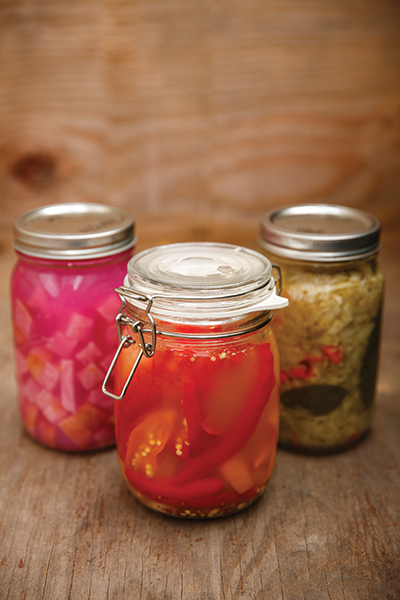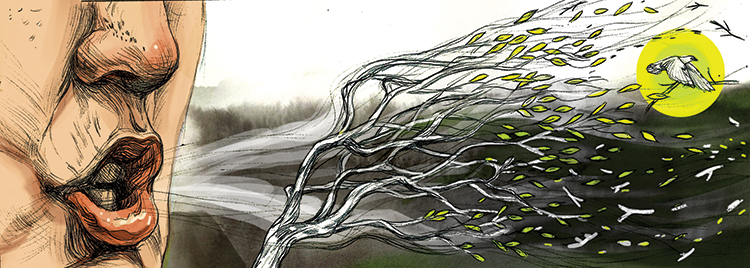Photo by Gene Smirnov
Counter Culture
by Anna Herman
Many of us with yards have those small animals that are dubbed micro-livestock—chickens, ducks, rabbits and honeybees and the like—as part of our urban homestead and hyper-local food sources. But even apartment dwellers can improve their nutrition and cultivate microorganisms by fermenting food. So many traditional and popular foods
and beverages from cultures past and present are the result of the process of fermentation. Grapes become wine and then vinegar; honey can become mead; barley turns into beer; milk into cheese; tea transforms into kombucha; cabbage becomes kraut or kimchee. You may not know that salami is fermented meat; miso, tofu and tempeh are all different forms of fermented soybeans. Cocoa beans are fermented before being used to make chocolate. Coffee and vanilla beans must be fermented between harvest and use. And where would we be as humans without the yeasts that transform wheat into bread?
The basic idea is to harness microorganisms. They can be the kind that are native to the surfaces of fruits and vegetables, those already present in milk or the kind that have been isolated, cultivated and packaged in a freeze-dried form. Once chosen, we create an environment for these cultures of yeasts and beneficial bacteria to thrive. The resulting product is a magical transformation of simple ingredients into complex, flavorful foods.
Fermentation preserves food with less energy than freezing or canning, and the process increases nutrient availability and in many cases adds other health benefits. Many delicious probiotic-rich fermented foods are easy to make at home in small
batches. As the local growing season kicks into gear, it’s time to learn what used to be called “putting by”: taking the bounty of local farm markets, community and backyard gardens and making it last all winter by preserving what you can. Let’s start with a basic understanding of the art and science of fermentation.
As Wild Fermentation blog author and fermentor guru Sandor Katz states in his book “The Art of Fermentation,” the process is as simple as “chop, salt, pack and wait.” Basic vegetable ferments require sliced or grated vegetables; light salting or soaking in brine, mixing and mashing the contents till the veggie juices flow, and then packing into a jar or crock tightly so the vegetables are below the level of the liquid. If there is not enough liquid, some water or brine is added to the mix—and the jar or crock is then put aside.
Ambient temperature, as well as salt levels, influence the time it takes to ferment a given batch. The slower the fermentation process, the longer the ferment will last. Some people like the fresh flavors of quick ferments, others enjoy the tang and depth of long fermented foods. Taste often and experiment. If your kraut is too salty, you are free to rinse it before serving. If a heat wave has your kvass bubbling too quickly, pop it in the fridge. Watch out for tap water—the chlorine may inhibit the flourishing of microorganisms. I leave tap water out overnight and haven’t had a problem.
Be aware that dark green vegetables, such as collards and kale, can be very stinky and strongly flavored. I make small batches of almost any veggies I have extra of. Thin-sliced savoy cabbage, minced spring garlic, sliced radishes and grated carrots mixed together and packed into wide-mouth quart-size mason jars are a special favorite. Chard stems, often too tough to saute, ferment beautifully. The most alluring ferment might be beets, garlic and dill with horseradish—sweet, spicy, tart and pink! Later in the season, the bounty of tomatoes and peppers can be turned into fermented salsa; and the sweet root veggies such as parsnips and turnips make delightful pickle chips to accompany winter roasts.
If you’re looking for an easy way to add to your homesteading skills, join in the community of fermentors who span the globe by making friends with the unseen organisms that make our food flavorful.
Anna Herman is a garden educator who raises chicken, ducks, bees, fruits and veggies in her Mount Airy backyard.








